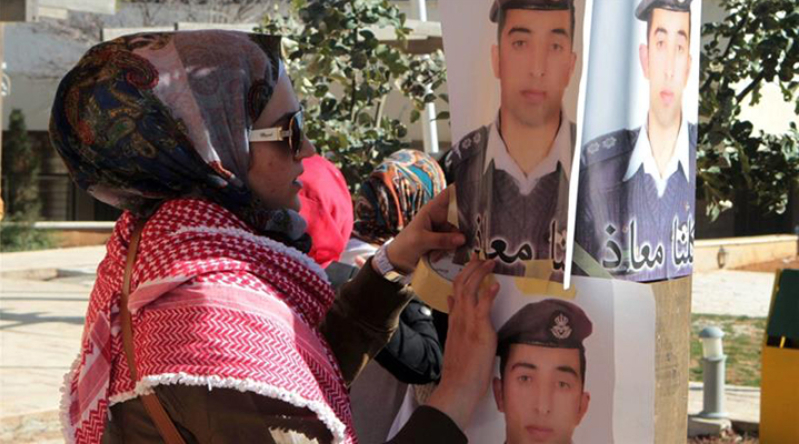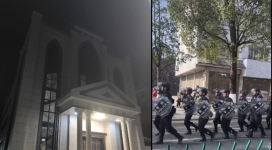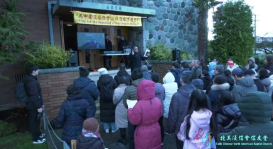
The Islamic State of Iraq and the Levant Group (ISIL) has released a video online Tuesday showing the burning death of Jordanian hostage Moaz al-Kassasbeh after a week-long hostage drama that involved the beheadings of other hostages from Japan.
The 26-year-old Jordanian pilot was captured in December when his F-16 fighter jet went down near Raqqa, Syria during a bombing mission meant to aid U.S. troops in the area. The gruesome video was released via an ISIL Twitter account that has previously released propaganda and beheading videos of other hostages.
"It's a very clear message and they are trying to show maximum brutality," Middle Eastern analyst Abdel Bari Atwan said about the video.
The 22-minute video was highly produced and showed the same logos as previous ISIL/ISIS videos. It warned that more Jordanian pilots will be shot down and suffer the same fate as al-Kassasbeh. Another video released just three days ago showed the beheading of Japanese hostage Kenji Goto.
While the video's authenticity is being investigated, Jordanian state TV says that they believe al-Kassasbeh was killed a month ago on January 3. President Barack Obama released a statement regarding the video, saying that if it's real, it would be "one more indication of the viciousness and barbarity" of the terrorist group.
"I think it will redouble the vigilance and determination of the part of the global coalition to make sure they are degraded and ultimately defeated," he added.
As the pilot's family anxiously watched the hostage situation unfold over the last few weeks, many hoped that the terrorist group would show leniency toward the pilot since he was Muslim. But still others believed that he would be dealt with even more harshly because of his position as a lieutenant in the Jordanian military and his support of the U.S. that they saw as being a "traitor."
The pilot and two Japanese hostages were being held to facilitate a negotiation for a trade-off with Sajida al-Rishawi who is being held by Jordan's government for her role in the 2005 hotel bombings that killed 60 people. Officials say that Jordan was in the process of going through with that prisoner exchange, but ISIL had no intentions of trading after all, simply threatening the pilot's death if al-Rishawi wasn't released.
And now that the pilot has been killed -- especially in such a horrific manner -- many Jordanians are calling for their government to take military action right away.
The Islamic State currently controls around one-third of Syria and Iraq with intentions to take over much more by force. They've so far released videos showing the beheading of two American journalists, an American aid worker, two British aid workers, and two Japanese citizens.
Lt. Kassasbeh was born in Karak, Jordan in 1988 as one of eight children to a prominent Sunni Muslim family. He attended King Hussein Air College and the Royal Jordanian Air Force and was qualified as a pilot in 2012 where he joined the No 1 Squadron at the Muwaffaw Salti Air Base. His plane was the first to go down during the bombing raids that started back in September.
While being interviewed by the Islamic State-run publication Dabiq after his capture, he said that his jet was shot down by a heat-seeking missile, but many military officials are denying that claim.
"I checked the system display and it indicated that the engine was damaged and burning," he said during the interview. "The plane began to deviate from its normal flight path, so I ejected. I landed in the River Euphrates by parachute and the seat caught on some ground, keeping me fixed, until I was captured by soldiers of Islamic State."
At the end of the interview, the reporter from Dabiq asked the pilot if he knew what the Islamic State will do to him. "Yes... they will kill me," he said.







